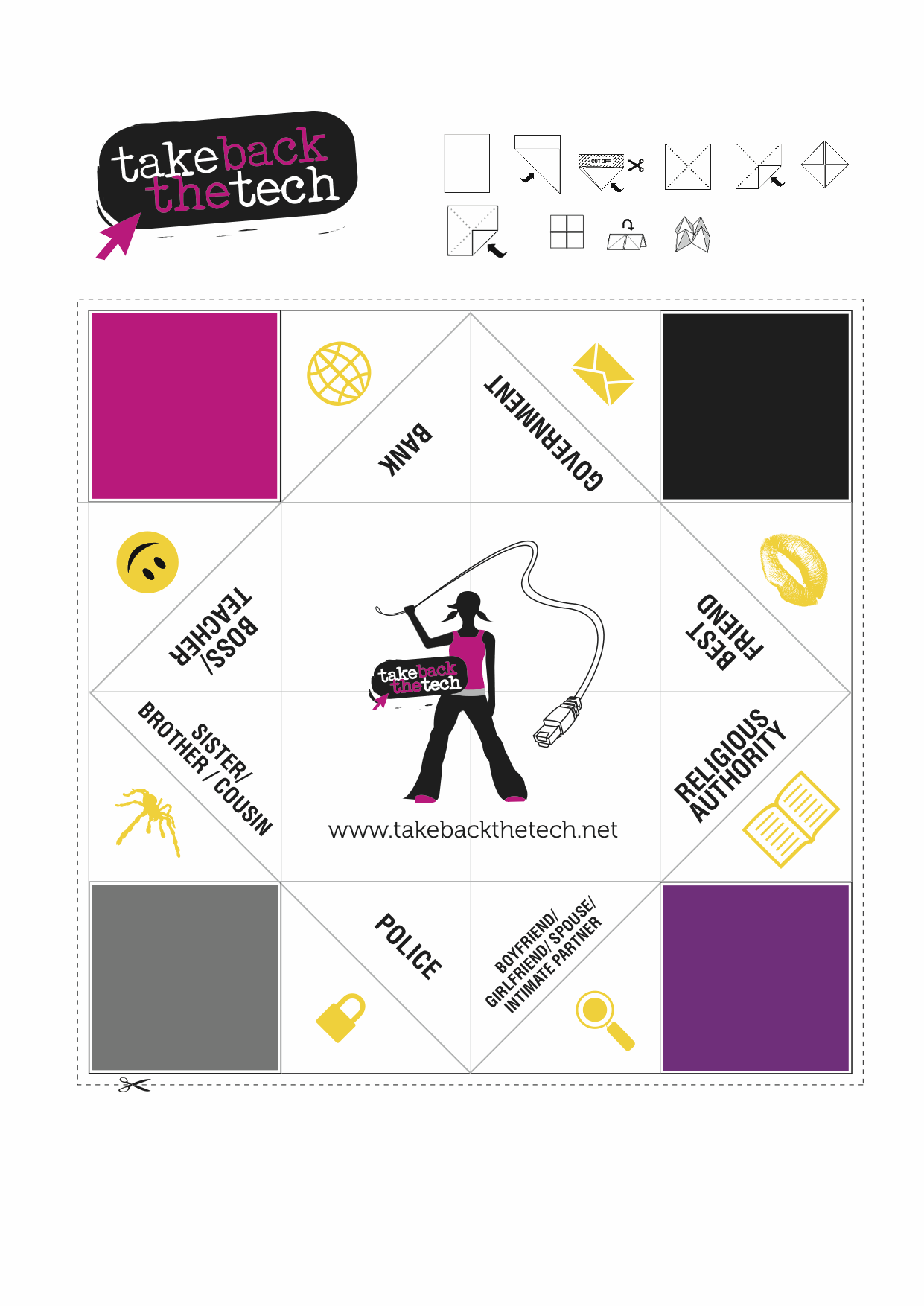Skip to main content
How to play "privacy catcher":
- Explore and think about different privacy dimensions in your online activities.
- Start a privacy discussion by playing “privacy catcher” with your offline social networks.
- Make a paper origami “privacy catcher”.
- Fold a square piece of paper following the diagram below. Or print, cut it out and fold it according to the lines.
- Or see how to make one on this video.
- Colour the 4 top square flaps different colours.
- Flip it over to the side with four triangle flaps. Each triangle should have a fold dividing it in half, making a total of 8 triangles.
- Put a symbol on each triangle:
- Padlock for passwords
- Spider for social networks
- Face for photos and videos
- Globe for geographic location
- Envelope for online mail
- Mouth for online chatting
- Book for contact directory
- Magnifying glass for searching and surfing
- Open up the triangles and write the following 8 options on the opposite side.
- intimate partner/boyfriend/girlfriend/spouse
- your best friend
- the police
- your boss/teacher
- your sibling
- a stranger
- the bank
- the government
- religious authority
- Find a friend (or several!).
- Ask them to pick a colour and spell it out, counting each letter with your “privacy catcher” by opening and closing it.
- When you stop, ask them to pick one of the symbols.
- Depending on the symbol chosen, ask a privacy question. The answer should either be spelled out or a number, so that your privacy catcher can “count” it. (Even if the answer is “yes” or “no” your “privacy catcher” can spell that out.)
- For example, if they choose the padlock, you can ask a password-related question: how long is your password? How many passwords do you have? How many people know your password?
If they choose a face for photos or videos, how many photos do you have online? (if they have hundreds, spell, don't count!) do you tag your photos with people's names and profiles? Have you ever seen/forwarded a nude photo that was meant to be private?
- Spell or count out the answer and ask them to pick another symbol. Take note of the symbol and open the flap.
- Read what is below and ask your friend “What happened with X (the person or institution under the flap) and Y (the symbol)? For example:
- What happened with the police and your email?
- What happened with your sibling and Twitter?
- Your friend then creates a privacy-related story of what happened based on the person and the symbol shown.
- Your friend then asks you, “What would you do?”
- It’s your turn to come up with an answer that responds to the situation that can help protect your right to privacy.
- Pass the “privacy catcher” to the other person, and play again (and again!)
- Bring your “privacy catcher” to school, to work, to your favourite sports place, bus stop, local hangout place, and start a conversation on privacy. Connect and play!

